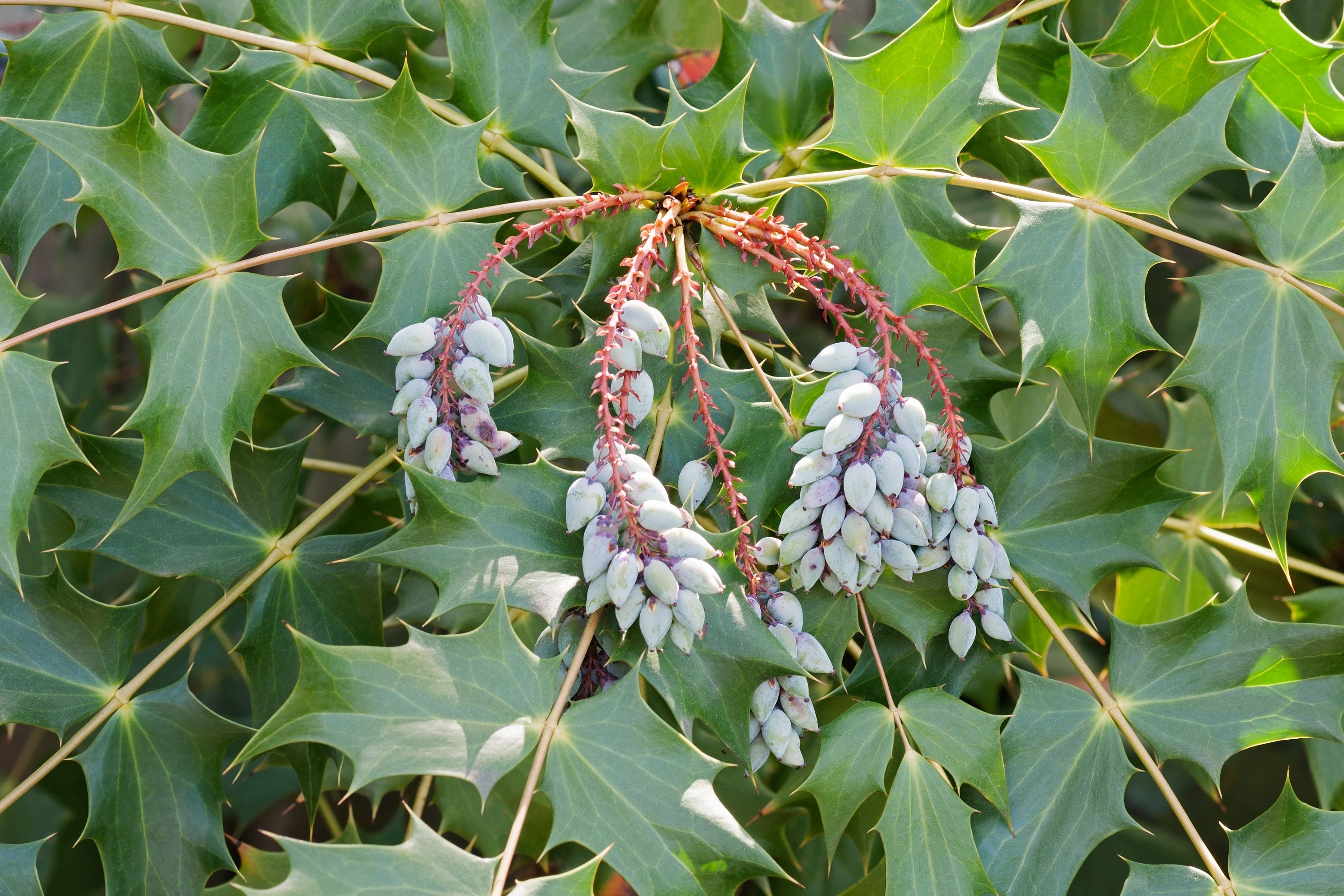Beale's barberry
(Berberis bealei)

Description
Berberis bealei is a woody plant species that belongs to the family Berberidaceae. It is commonly known as Beale's Barberry or Chinese Barberry and is native to central and southern China. This plant species is highly valued for its ornamental purposes and has become a popular landscaping plant in many parts of the world. Taxonomy and Nomenclature Berberis bealei was first described by British botanist William Botting Hemsley in 1888. The species epithet "bealei" is named after John Beale, an Englishman who collected botanical specimens in China during the late 19th century. Description Berberis bealei is a deciduous shrub that can grow up to 10 feet in height and 6 feet in width. It has an upright and bushy growth habit with arching branches. The leaves are simple, ovate to elliptic in shape, and measure about 2-5 cm in length and 1-3 cm in width. They are dark green in color and have a glossy appearance. The leaves turn a bright red color in the fall before dropping. The flowers of Berberis bealei are small, pale yellow in color, and appear in clusters in late spring. The fruit is a small, oblong berry that measures about 1 cm in length and is green when young, turning to a deep red color when mature. The berries contain 1-3 seeds each and are edible but sour in taste. Distribution and Habitat Berberis bealei is native to central and southern China, where it grows in mountainous areas, forests, and scrublands. It has been introduced to many other parts of the world, including the United States, where it is considered an invasive species in some areas. Cultivation and Uses Berberis bealei is a popular ornamental plant that is grown for its attractive foliage, flowers, and fruit. It is often used as a hedge, border plant, or specimen plant in gardens and landscapes. It is relatively easy to grow and requires well-draining soil and full sun to partial shade. Propagation of Berberis bealei is typically done through seeds or cuttings. Seeds can be collected from the ripe berries and sown in the fall or spring. Cuttings can be taken in the summer and rooted in a mixture of sand and peat moss. In traditional Chinese medicine, Berberis bealei has been used for its medicinal properties. The plant contains alkaloids such as berberine, which has been found to have antimicrobial, anti-inflammatory, and antidiabetic properties. Invasive Potential Berberis bealei has become an invasive species in some parts of the United States, particularly in the eastern and midwestern regions. It is capable of spreading rapidly and displacing native plant species. In areas where it is considered invasive, it is recommended to remove the plant and use alternative native species in landscaping and gardening. Conclusion Berberis bealei is an attractive and popular ornamental plant that has become widely cultivated in many parts of the world. However, its invasive potential in some areas has raised concerns about its impact on native ecosystems. It is important to be aware of the potential risks associated with planting Berberis bealei and to consider using alternative native species in landscaping and gardening.
Taxonomic tree:







